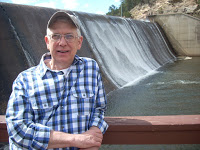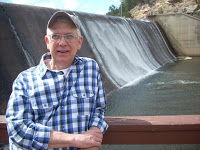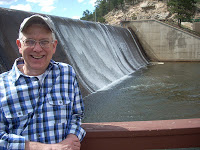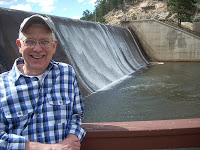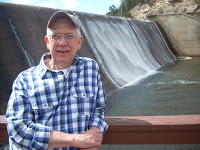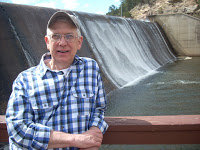In my junior high and senior high school years while listening to LPs I directed orchestral and choral music before the mirror in the front room. I fantasized myself back then as a conductor. In my young adult years I fantasized that the children I taught would retain as adults useful information, memories, and impressions that would inform their thinking and provide insightful reading of biblical, theological, and religious experience. I hoped that when they read they would find the religious landscape familiar. I hoped that they would realize they had learned skills in childhood that were still informative and not a block to their continuing growth. Such educational fantasies I entertained. As for the adults I taught, I simply hoped they would find new perspectives rather than insist on the same old ideas! For the past fifteen years I have fantasized that my massage clients in the sessions would relax deeply into the relief the therapies provide and from our work together would discover the ability to change postures or otherwise improve their day-to-day movement. But these days those fantasies serve me little, for now I am facing retirement in which I will sever my formal work relationships, a retirement that in its anticipation is engendering a whole new fantasy world.
Last week I received a retirement package from Heather, my daughter-in-law, a kit that includes a children’s book titled The cat with two homes Text by Tim Henley, illustrations by Jo Burroughs. Reader’s Digest Association Limited, 1989). Heather told me she has read the story to dozens of children and thinks it may help me prepare for my retirement. She wants me to meet the main character named Olly who she is sure will help me conceptually. She suggested I become a part-time vagabond somewhat like that cat. Of course that means I make longer visits to Mid-Missouri to see the family, play cards, work, live on the farm, and have long creative conversations. I’m imagining that but hope trips there wouldn’t include milking the goats.
Heather also sent watercolor and pastel paintings made by two of my granddaughters. I’m inspired by Rosa’s works and entertained by Ulzii’s. I framed one picture from Rosa to hang in my studio. Soon I hope to work with a teacher to learn watercolors. That means buying MDV boards, attending a class, and more. I already purchased a portable kit of paints that has brilliant colors and have a fine set of watercolors in tubes. I’ve got the other goods too: tape, paint, papers, and brushes. Now it’s time to learn how to use them with greater effect than I have been able to produce on my own. I’ll start the work soon.
During trips to my Missouri farm home, I imagine sketching plants and animals as well as buildings in towns and the countryside. I can make Artist Trading Cards galore from the new images using my watercolor supplies and techniques. I’m sure to have a wonderful time. I can send cards to my artist friend Sue who can trade them in Denver on my behalf.
I’ll also take my laptop and write a book. That will require more time than I have ever given myself in my trips there. Surely I can arrange to write in one of my vagabond homes. Oh I’ll have to find a nice coffee shop nearby, preferably one that has a resident cat, wonderful scones, and only the best coffee. I am pleased at these fantastic details. I’ll carefully plan my trips at the best times of the year. I’d hate bad weather to mess with my sunny fantasies unless clouds should provide interesting subjects, colors, and shadows for my anticipated watercolor works.
Heather also wants me to join my granddaughters and grandsons in art and music making and perhaps to get them summertime coffee house bookings in Denver, making way for their first interstate tour. This fantasy goes on and on, and all of it arising from one short letter and a small book about a cat who not only had two homes but also disappeared in the evenings to places even the storyteller didn’t know about. I’m finding that my life anticipating retirement is good; details flourish in this my favorite current fantasy.
© Denver, 2013
About the Author
Phillip Hoyle lives in Denver and spends his time writing, painting, and socializing. In general he keeps busy with groups of writers and artists. Following thirty-two years in church work and fifteen in a therapeutic massage practice, he now focuses on creating beauty. He volunteers at The Center leading the SAGE program “Telling Your Story.”
He also blogs at artandmorebyphilhoyle.blogspot.com
